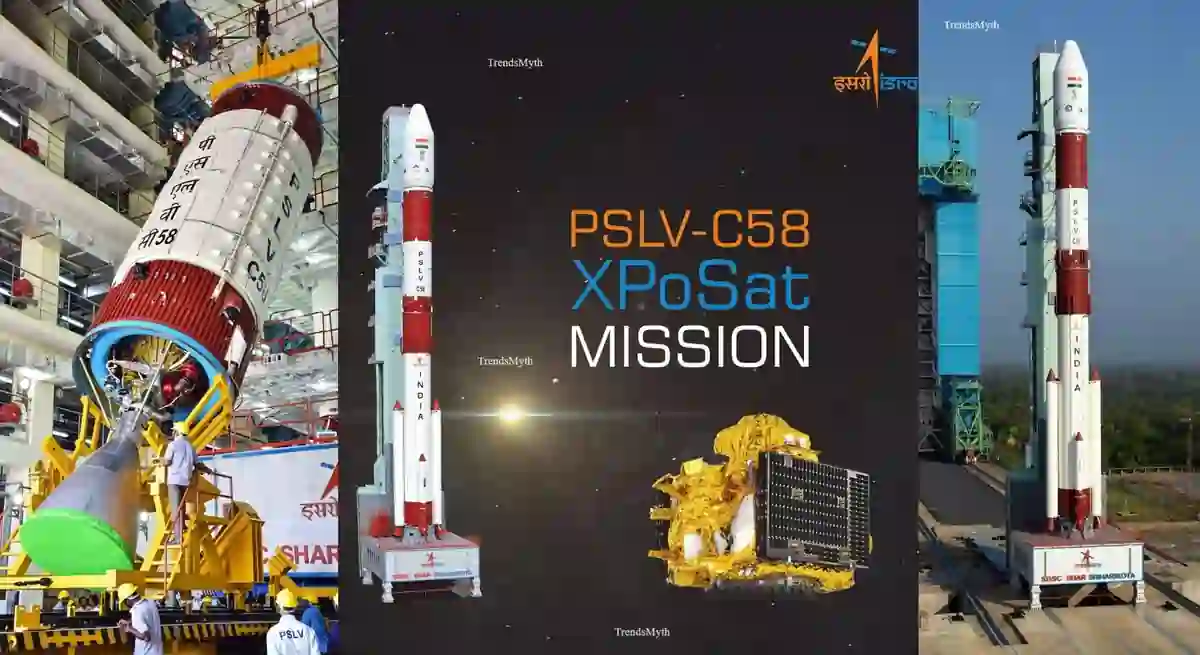On Monday, January 1, the India Space Research Organisation (ISRO) is set to unveil their XPoSat satellite, designed as an X-Ray Polarimeter Satellite, designed to explore black holes and investigate their polarisation from intense X-ray sources.
This first-of-its-kind project in India aims to study this intriguing environment as well as investigate any polarisation from low sources of radiation that are close by.
Space Agency officials explained that “XPoSat” will serve as India’s dedicated polarimetry mission to examine bright astronomical X-ray sources under extreme conditions. It will launch on a Polar Satellite Launch Vehicle.
XPoSat Mission: Date, Time And Location
ISRO will launch the PSLV C58/EXPOSAT mission at 9:10 am IST on Monday, January 1, 2024. The launch will take place from Satish Dhawan Space Centre in Sriharikota.
What is the Time to Launch XPoSat Satellite?
ISRO will launch XPoSat on January 1 at 9:10 am from the Satish Dhawan Space Centre in Sriharikota.
Where Can We Watch The Launch Of XPoSat?
ISRO will livestream the launch of the XPoSat satellite on social media platforms such as its official website, YouTube channel, and Facebook page. Don’t miss this historic event.
Watch the live broadcast of the ISRO launch on DD National TV or the ISRO official website; the launch will also be shown live on TrendsMyth.
ISRO announced on X, formerly known as Twitter, that “The launch date of the X-Ray Polarimeter Satellite will be January 1, 2024, at 09:10 hours from SDSC SHAR in Sriharikota.”
XPoSat Mission Overview
ISRO’s PSLV C58 mission will launch the XPOSAT Satellite into an orbit with a low inclination towards the east. After injecting XPOSAT, two PS4 stages would be restarted twice to reduce rotation to 350 km circular orbit while maintaining a 3-axis stabilised mode for Orbital Platform experiments.
ISRO announced that they would conduct the PSLV Orbital Experimental Module-3 experiment (POEM-3), with ten payloads supplied by ISRO, IN-SPACe, and other agencies, scheduled to meet its objectives. The XPoSat spacecraft will carry two scientific payloads into low-earth orbit.
POLIX will measure polarimetry (angle and degree of polarisation) within the medium X-ray energy range (8-30keV photons from astronomical origin).
ISRO also announced that their XSPECT payload (X-ray Spectroscopy and timing) would provide spectroscopic data between 8-15keV energy range.
According to ISRO, Mission Objectives Include:
1. To determine the polarisation of X-rays in energy bands 8-30keV from around 50 potential cosmic sources by Thomson Scattering using POLIX payload.
2. To conduct long-term spectral and time studies of cosmic sources in the energy range 0.8-15keV using EXPECT as a payload.
3. To perform polarisation and spectrum measurements of cosmic X-ray emission by POLIX or XSPECT payloads in the same energy band.
4. By measuring the degree of polarisation and its angle, one can study the distribution of magnetism, geometric anisotropies in relation to line-of-sight, the nature of accelerators, and alignment with regard to line-of-sight.
5. The structure and geometry of the magnetic field in neutron stars. Mechanism of X-ray beaming and its relationship with the luminosity of powered pulsars and their mass.
6. Understanding galactic black holes binary sources.
7. The outer cap of a pulsar or the polar cap of a neutron star is used to study and confirm X-ray production.
8. It is important to distinguish between the thermal and synchrotron emission mechanisms in Supernova remnants.
XPoSat Payloads: POLIX & XSPECT
POLIX, developed jointly by Raman Research Institute of Bangalore and U R Rao Satellite Centre in collaboration, is designed to observe astronomy within an 8-30 keV energy range.
The instrument consists of a collimator and scatterer connected by four proportional detectors, with collimation set at 3 degrees so as to focus observations on one bright source at once.
Over its five-year lifespan, POLIX will observe 40 bright objects of various categories, which constitutes an amazing advance for medium X-ray energy band polarimetry technology.
XSPECT, the X-ray spectroscopy and Timing payload aboard XPoSat, complements POLIX by providing fast timing in soft X-rays with high spectroscopic resolution and wide effective area (30 cm2). Utilising Swept Charge Devices(SCDs), its effective site reaches 30 cm2 while boasting 200eV resolution.
In addition, passive collimators narrow its field of view, enabling long-term monitoring of spectral changes within continuum emissions, variations in line flux variation monitoring as well as monitoring soft X-ray emission between 0.8-15keV emission levels.
Thus, making XSPECT an invaluable mission that encompasses many celestial objects; these include X-Ray Pulsars(XRPs), black hole binaries(LMXBs), low magnetic neutron stars within these binaries as well as active galactic nuclei.
ALSO READ: KNOW HERE THAT ADITYA L-1 IS HOW MUCH FAR FROM SUN











1 thought on “ISRO Launch XPoSat Satellite For Study Black Hole See Here”